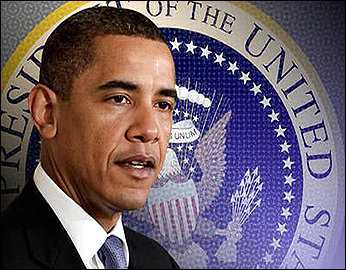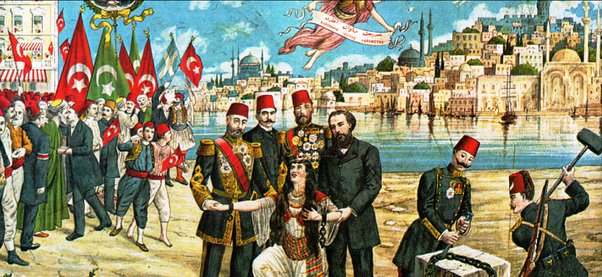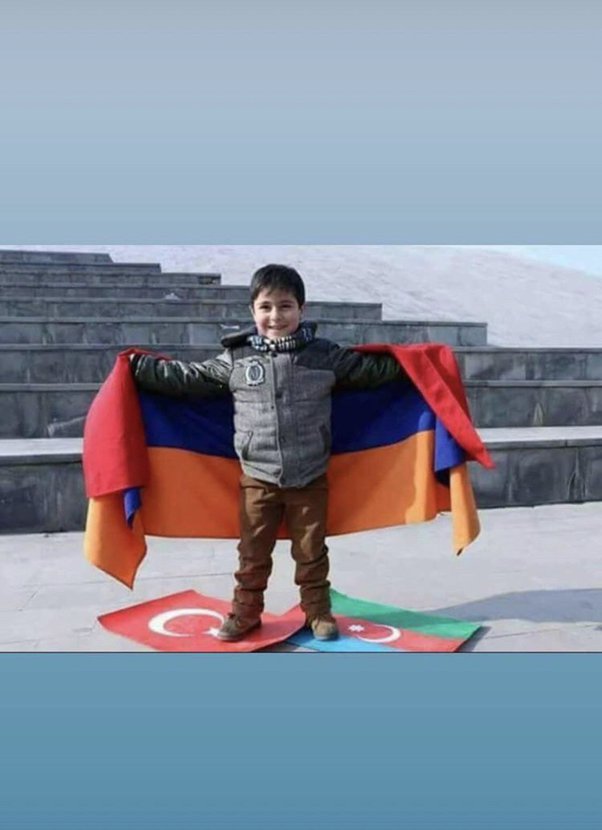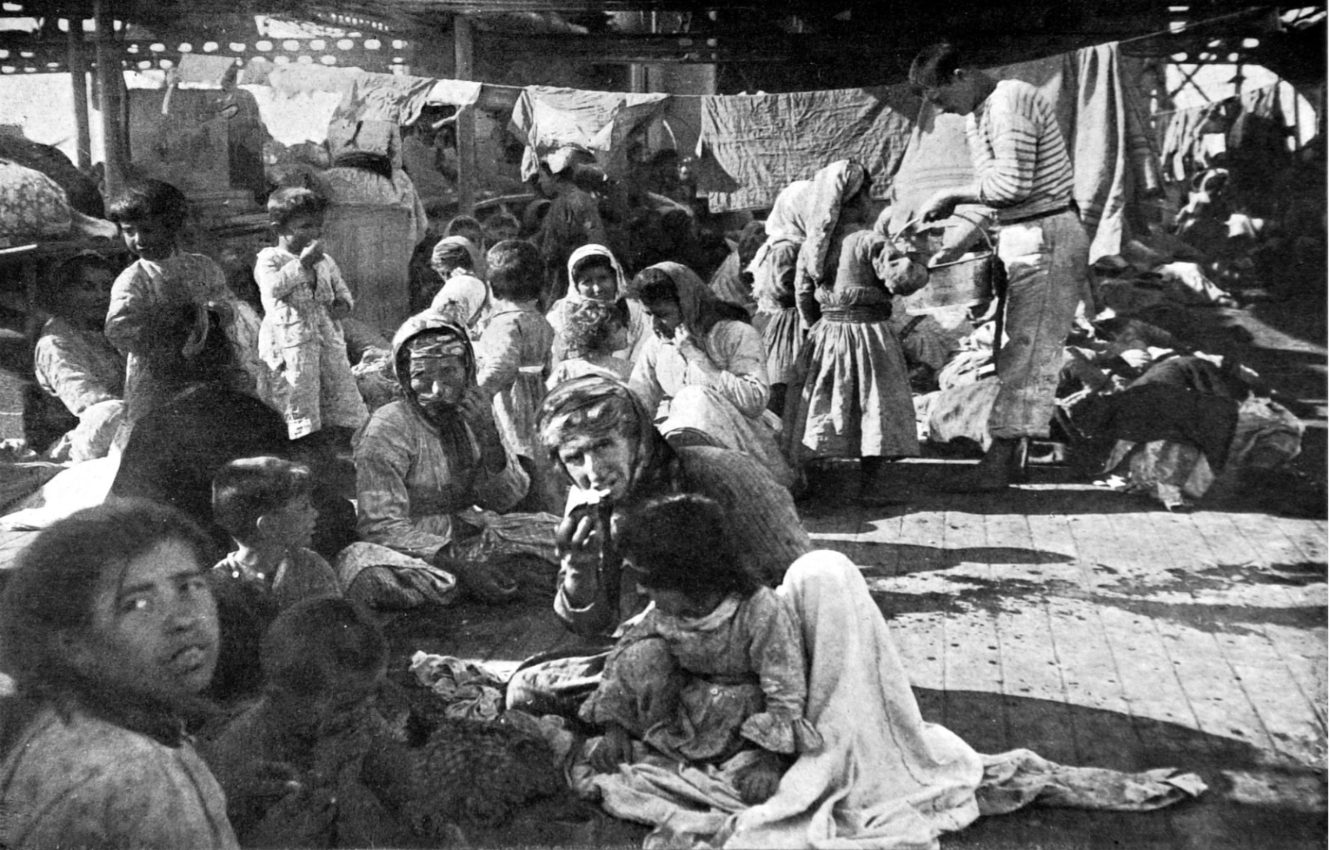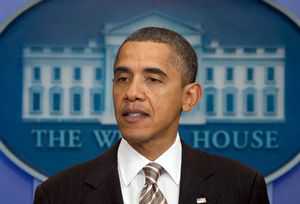 By Taner Akçam.
By Taner Akçam.
Middle East Policy, Vol. XVII , No. 1, Spring 2010
© 2010, The Authors
Journal Compilation © 2010, Middle East Policy Council
Book Reviews
Review Essay: The Armenian Question*
Ermeni Meselesi Hallolunmuştur: Osmanlı Belgelerine Göre Savaş Yıllarında Ermenilere Yönelik Politikalar
[The Armenian Question Resolved: Policies Toward the Armenians in the War Years according to Ottoman Documents]1 By Taner Akçam.
İstanbul: İletişim Yayınları, 2008, 3rd printing. 339 pages.
Erman Şahin, independent researcher, Ankara, Turkey
The main argument of this book is that the Armenian deportations of 1915-16 under the Ottoman Empire were not a temporary military solution necessitated by the circumstances, of World War I but an attempt to solve the Armenian question by radical means. According to Taner Akçam, this was part of a general population policy on the part of Ottoman leaders that aimed at deporting and exterminating the empire’s Christian minorities and assimilating its non-Turkish Muslim minorities. Moreover, Akçam argues, Ottoman archival materials support these contentions (pp. 11-12). With some justice, Taner Akçam is highly critical of conventional Turkish interpretations of the Armenian massacres during WWI. In this sense, the book is a welcome source of differing views. Nevertheless, while the entrenched nationalist interpretations of the catastrophic events of 1915-16 are admittedly inadequate for understanding and explaining the tragedy that took place, the logical consequence of this state of affairs should not lead one to conclude that any alternative to this simplistic approach would necessarily be accurate and honest.
The book contains an introduction, seven chapters, and a conclusion. The first chapter discusses relevant Ottoman archival sources and other materials. The second attempts to describe “the plan to homogenize Anatolia.” The third and fourth chapters talk about Ottoman policies toward the empire’s Greek population before and during World War I. The fifth, sixth and seventh chapters deal with the Armenian deportations and the massacres during the war. The contents of some chapters are quite similar to those of Akçam’s earlier works. However, in this book Akçam attempts to substantiate his arguments by also using Ottoman archival materials.
According to Akçam, after the Balkan Wars of 1912-13, the Committee of Union and Progress (CUP), the ruling faction in the Ottoman government, devised plans to homogenize Anatolia on an ethno-religious basis. With this goal in mind, they conducted several studies of the population structure, dealing with various groups’ ethnic, social and economic characteristics. By 1913, they began to implement these policies through “a dual mechanism” whereby the government could ostensibly remain within a legal framework while, in fact, resorting to violent activities through secret channels (p. 37). The studies to which Akçam refers include the preparation of ethnicity-based census data, maps and information about the economic situation of the Christian minorities (pp. 39-45).
*To access the endnotes for this essay, please visit the Middle East Policy Council website at .
145
Book Reviews
Akçam’s argument about war-time population engineering is worthy of serious consideration; however, his insistence that these policies were already mapped out before the war remains problematic on a number of levels. Here, he relies too much on hindsight and fails to establish any concrete link between these studies and subsequent implemented policies. He reads backwards from subsequent to earlier events. In addition, some of the studies (or inquiries) to which he refers were actually made during the war. Therefore, it is questionable to interpret all of this data as evidence for the existence of a pre-war “plan” to homogenize Anatolia.
According to Akçam, economic dimensions in particular held an important place in these population policies. In order to realize homogenization, the CUP-controlled Ottoman government instructed local authorities to conduct inquiries and keep records on the property of non-Muslim minorities. In 1914, the government sent telegrams to various provinces demanding detailed information on Greek assets and properties (p. 45). Akçam’s argument, however, is marred by inconsistency; he subsequently notes that these inquiries were made parallel to the negotiations conducted for the proposed exchange of populations between Greece and the Ottoman Empire following the Balkan Wars (p. 47). Indeed, in July 1914, the Ottoman and Greek delegations met in İzmir with the aim of negotiating the exchange of populations. The settlement of the property-and-assets claims was also part of the negotiations.2 As far as the Armenians are concerned, Akçam is able to provide only one such inquiry. However, since the date of this inquiry is November 1915 (p. 47, fn. 29), it does not provide any support for the existence of a pre-war plan for homogenization.
On the basis of his interpretation of settlement regulations, Akçam argues that the relocated Armenians were to be only between 5 and 10 percent of the total Muslim population in the areas designated for the settlement of the Armenian deportees (pp. 56-62). To obtain a clearer picture of the implications of this regulation, Akçam attempts to determine the total number of Armenians subjected to relocation and the total population of the Muslims living in settlement areas in “Syria and Iraq.” Akçam estimates the total Muslim population in the areas designated for the settlement of Armenians to be 1,680,721. Using the figure of 924,158 (provided by Turkish journalist Murat Bardakçı from Talat Pasha’s “Black Book”) as a basis, and making several adjustments for the missing districts and provinces, Akçam estimates the total number of Armenians subjected to deportation at over one million (pp. 66-67). He notes that even though the regulations envisaged the settlement of approximately 168,000 Armenians (10 percent of the Muslim population in the region), the number of Armenians deported was above one million. Akçam ends his discussion by asking, “How can more than one million Armenians be reduced to the 10 percent of a Muslim population numbering 1,680,721?” (p. 67).
Akçam implies that the discrepancy can be explained by extermination, since he believes the existence of this regulation “by itself” is sufficient to demonstrate that “the policies adopted against the Armenians were aiming at their annihilation” (p. 62). Others, however, dispute such an assertion, arguing that the relocated Armenians were not to exceed 10 percent of the local population only in the Muslim villages into which they would be settled, and not of the entire population of these provinces. In addition to these villages, it is suggested, there were also “Armenian areas that would be newly established” for the settlement of the Armenians.3 More important, the figure provided by the journalist Bardakçı not only represents the number of Armenians sent to “Syria and Iraq,” but also includes those Armenians sent to other resettlement areas within Anatolia itself. Therefore, rendering this figure as the number of Armenians sent to “Syria and Iraq” alone is also questionable.4
In the third chapter, Akçam deals with the persecutions of the Greek population in Thrace and western Anatolia after the Balkan wars. According to him, these persecutions were instigated by the Ottoman authorities, who aimed at intimidating the Greek population in order to cleanse them from these regions. Akçam quotes several inconsistent figures on the number of Greeks who had fled the Ottoman Empire, some of which are grossly exaggerated. Basing his claims on a book by Cemal
146
Middle East Policy, Vol. XVII , No. 1, Sp rin g 2010
Kutay, Akçam quotes Eşref Kuşçubaşı, a prominent Special Organization (SO) agent, as stating that “in 1914 alone” the number of the deported “Greek-Armenian population in the Aegean region, concentrated and settled especially in the coastal areas,” was 1,150,000 (p. 100). However, there is no other source that could verify and corroborate a population movement on such a grand scale “in 1914 alone.” In his footnote, Akçam further asserts that “Celal Bayar, who presents detailed passages from Kuşçubaşı’s memoirs, gives separate figures for specific cities. The total of these is the same as the figure above 1,150,000” (p. 100, fn. 77). However, the total given in Bayar’s memoirs is not 1,150,000, but 760,000.5 In addition, the figures provided in Bayar’s work have no relation whatsoever to the number of deportees but indicate the number of people living in specific regions. More critically, according to a different work by Cemal Kutay, the figures in question were actually taken from a book prepared by Athens University and were inflated.6
At the end of the third chapter, Akçam discusses the relationship between the persecution of Greeks and the deportations of Armenians in a section titled “Was the Greek Relocation of 1913-1914 a Prelude to the Armenian Cleansing of 1915-1917?” (pp. 104-107). His contention is that there was a connection between the two cases in terms of both the “organization” and the “cadres” that implemented them. However, Akçam is able to identify only “three persons” who, according to him, were involved in both cases. Even when one takes it at face value, his thesis is still not fully convincing and would require more empirical research than he offers. More important, of the three names that he provided in support of his thesis, two are problematic. One of these is Şükrü (Kaya) Bey, who later headed the Ottoman “Directorate for the Settlement of Tribes and Refugees” and was involved in the relocation of Armenians. Akçam produces no evidence demonstrating that he was involved in either the persecution or the migration of Greeks, focusing instead on the fact that Şükrü Bey had been a member of the Ottoman delegation that conducted negotiations with Greece in the summer of 1914 concerning the proposed exchange of minorities (p. 105). However, when World War I broke out, this project had not been realized.
Akçam’s other example is “Pertev (Demirhan) Pasha,” who, he asserts, was involved in the deportation of Greeks in western Anatolia and would later take part “in the deportation and the murder of Armenians” in the Sivas region (p. 106). Here Akçam confuses Major General Pertev (Demirhan) Pasha, the commander of the 4th Army Corps, with Lieutenant Colonel Pertev Bey, the deputy commander of the 10th Army Corps in Sivas. When Colonel Pertev Bey was in Sivas,7 Pertev (Demirhan) Pasha was actually in Buca, İzmir.8 While the latter had never served in Sivas,9 Akçam produces no evidence showing that the former was involved “in the deportation and the murder of the Armenians” in Sivas either. To support his claim of Pertev Bey’s involvement in the deportation and murder of Armenians in Sivas, Akçam refers to an article by the Armenian scholar Vahakn N. Dadrian, purportedly describing “the mission” of Pertev Bey (p. 106 fn. 98). Although Dadrian’s article confirms that Colonel Pertev Bey served in Sivas, it contains no evidence about “the mission” or, Pertev Bey’s involvement “in the deportation and the murder of Armenians.”10 Thus, the author’s argument that there was a connection between the two cases remains unconvincing.
The fifth, sixth and seventh chapters, which constitute the longest part of the book as well as its main subject, are devoted to the relocation of Armenians. Akçam’s main argument is that the policies adopted against the Armenians were aimed at their annihilation and that the documentary evidence from the Ottoman archives confirms this. However, these contentions are not adequately supported.
In his introduction to the fifth chapter, Akçam gives special attention to Talat Pasha’s memorandum of May 26, 1915, which outlined the stated reasons for the Armenian relocation and was submitted to Grand Vizier Said Halim Pasha. Akçam argues that the document had never been rendered in modern Turkish in its entirety (p. 134). However, this is not true; the entire text of the document in modern Turkish is actually found in a document collection on the issue.11
147
Book Rev iews
Akçam notes that the Ottoman authorities’ main goal was to remove the possibility of the establishment of an independent Armenian state within the boundaries of the empire. Few would dispute this assertion. In order to support it, Akçam approvingly quotes from Talat Pasha’s telegram of August 29, 1915, sent to various provinces and sanjaks (pp. 136-137). Yet, when discussing a different matter some 130 pages later, he changes his mind about the reliability of this document and dismisses the very same telegram as part of “a great deception” (pp. 266, 267 fn. 229). Akçam makes no effort to address the question of why a document that he approvingly quoted in one instance should be dismissed as unreliable in another.
Akçam argues that the relocation of the Armenians went beyond being a temporary security measure and was aimed at “terminally solving the Eastern Question” through the extermination of the Armenians. He argues this can be deduced from a letter by the influential CUP member Bahaettin Şakir Bey, quoted by the Turkish journalist Ahmet Emin Yalman (p. 138). Stretching the point further, Akçam observes important “similarities” between this alleged “letter” and two letters attributed to Bahaettin Şakir by Aram Andonian (p. 138 fn. 10). However, Yalman was not quoting “from a letter of Bahaettin Şakir,” as Akçam contends, but was conveying a rumor.12 Furthermore, Bahaettin Şakir could not have sent the letter dated March 3, 1915,13 which is published in Andonian’s work and regarded by many as a forgery,14 since Bahaettin Şakir was not actually in İstanbul when it was sent, but in Erzurum, where he remained until March 13, 1915.15
According to Akçam, the CUP’s Central Committee arrived at the decision to annihilate the Armenian population in March 1915 (pp. 150-151). However, the memoirs of Arif Cemil Denker (to be discussed later), which Akçam uses as his source, do not support such an assertion, but only mention that the “relocation” of Armenians was decided without implying any destructive designs. Akçam further maintains that some officials who opposed the government’s policy in this regard were removed from office. He notes, for instance, that Reşit Pasha, the governor of Kastamonu province, was removed because he opposed the deportations within his province (p. 161). However, it is noteworthy that, even after the removal of Governor Reşit Pasha, the Interior Ministry in several communiqués dispatched to the province still instructed the local authorities to not deport the Armenians in Kastamonu.16 For instance, on September 28, 1915, Interior Minister Talat dispatched a telegram to Kastamonu, apparently in response to an inquiry made by the local authorities, stating that “[a] handful of Armenians there cannot disrupt the public order within the province…. At present, the Armenians there will not be relocated.”17
Akçam argues that the governors who were removed from office later testified before the “Commission on the Investigation of Evil Acts,” as well as the post-war military tribunals, that they were removed because of their opposition to the deportations. As an example, Akçam cites how “Mazhar Bey,” the former governor of Ankara, explained his case (p. 161). However, the pronouncement quoted by Akçam was not made by Mazhar himself, neither to the mentioned commission nor to the post-war tribunals, but was instead attributed to Mazhar Bey by a person named Mehmet Radi.18
Akçam contends that, along with the CUP’s responsible secretaries, CUP member Bahaettin Şakir himself also “traveled around the eastern provinces and met with the governors, sub-governors and other persons” and “informed them of the [genocide] decision of the CUP’s Central Committee” (p. 162). Unfortunately, this is one of the many instances in the book where facts are confused by Akçam’s gloss. The memoir of Hüseyin Cahit Yalçın, which Akcam cites as his source, does not mention any decision by the CUP Central Committee at all, but relates that Bahaettin Şakir seemed to “have traveled around the eastern provinces and met with the governors, sub-governors and other persons, and, by exceeding the limits of his authority, presented his personal thoughts as if they were the decision and the wish of the CUP and the Central Committe”19 (italics added).
Akçam also cites passages from several sources in order to demonstrate the direct responsibility of state officials in the killings, but these are used selectively. He leaves out information in the
148
Middle East Policy, Vol. XVII , No. 1, Sp rin g 2010
sources that does not coincide with his thesis. For instance, he quotes from a speech made by Mehmet Emin Bey, the deputy for Trabzon, during the discussions in the Ottoman Parliament in which Mehmet Emin states that he personally witnessed that the prefect of Ordu “loaded a boat with the Armenians on the pretext of sending them to Samsun, and then had them tipped into the sea” (p. 165). Akçam then goes on to quote Mehmet Emin Bey’s subsequent remarks but omits a relevant part: “As soon as I arrived here [İstanbul] I told what I witnessed to the minister of the interior [Talat Pasha]. Thereafter, they sent an inspector and dismissed the prefect [of Ordu]. They put him on trial.”20
Akçam asserts that the Ottoman Interior Ministry remained unmoved by the news of the Armenian massacres (p. 199) and considers the telegrams ordering the protection of Armenians unreliable. He further believes that these were written merely to placate foreign ambassadors. Akçam’s arguments are not always convincing, however. For example, upon receiving the news that a convoy of 500 Armenians who had departed from Erzurum was attacked and massacred, Talat Pasha dispatched a telegram, dated June 14, 1915, stating that every measure should be taken “to protect the Armenians against the assault of the tribes and villagers, and to punish those who dare to kill and abduct them.” After quoting this text from the telegram, Akçam dismisses it as a “sham” and argues that “there is enough evidence” to show that “Talat wrote the telegram in question under the pressure of the German Embassy” (pp. 200-201, fn. 43). Akçam produces no such curious “evidence,” however. Instead he refers to a lengthy essay that actually contradicts his thesis. According to this essay, the Erzurum German consul’s telegram, which informed his embassy of the massacre, was sent on June 16, 191521 — two days after Talat had already sent his telegram.
The lack of critical footnotes also weakens Akçam’s arguments. For instance, he claims that two Armenian deputies of the Ottoman Parliament, Krikor Zohrab and Vartkes Serengülyan, were killed on the order of Cemal Pasha, the commander of the 4th Army, but fails to cite a source (p. 248). More important, several other sources cited by Akçam such as Falih Rıfkı Atay’s account, attest to the contrary: that Cemal Pasha had actually tried to protect the two Armenian deputies.22
Akçam also discusses the relocation of Catholic and Protestant Armenians. According to the author, the government deported them using a two-track communication system whereby the official orders, ostensibly sparing Catholics and Protestants from deportation, were followed by subsequent coded telegraphic instructions ordering their deportations and sending special inspectors to the regions to enforce them. On the basis of a report by the German Adana consul, Akçam argues that Talat Pasha sent Ali Münif Bey as a special inspector to Adana in order to enforce the relocation of Catholics and Protestants. Indeed, Akçam asserts, “in his memoirs Ali Münif confesses that he himself prepared the list of the Armenians to be deported from Adana” (pp. 267-268). However, Ali Münif makes no such confession. There is also no indication in his memoirs that he had been sent to the region as an inspector to enforce any mission. Ali Münif says that on his way to take up a new post in Lebanon, he stayed for a few days at his hometown, Adana, where he also came into contact with the three local CUP members (İsmail Safa, Muhtar Fikri and Kibarzade), who “bitterly” complained about the Armenian activities and “even prepared and gave” him a list of alleged ringleaders who should be deported. Upon “seeing the critical situation” in the region that might have “resulted in bloodshed at any moment,” Ali Münif goes on to say, “I have sent a telegram to the interior minister, Talat, requesting the immediate inclusion of Adana into the relocation zone and telling him that if this is not done, I will not set foot on mount Lebanon. In addition, I have sent a list [to Talat].”23 Apparently, Ali Münif identified the list he sent as “prepared” and “given” to him by the three locals. This becomes even more apparent in subsequent sections of the memoirs, especially since the list in question is described as being in the handwriting of Muhtar Fikri, one of the three who prepared and gave him the list.24
Akçam further believes that the Ottoman documents corroborate his thesis on the Catholic and Protestant Armenians and that the telegrams sent from various regions in September 1915 state
149
Book Rev iews
that all Armenians, including Catholics and Protestants, were deported and that none had remained in the concerned provinces (p. 268). However, of the four telegrams cited by Akçam, two actually contradict his statements. The telegram sent from the sanjak of Niğde, for example, actually states that “an Armenian population of 221 persons, consisting of Catholics and Protestants,” remained within the sanjak,25 while the telegram sent from the sanjak of Eskişehir states that “the number of Armenians required to be removed [from the sanjak] amounted to 7,000” and that all of these were dispatched.26 This does not mean that all Armenians had been deported and that none remained. While Eskişehir’s Armenian population was over 7,000,27 the anti-Unionist author Ahmet Refik (Altınay), who at the time was in Eskişehir, also wrote that the Catholic Armenians as well as the families of the Armenian soldiers serving in the Ottoman Army remained in Eskişehir.28 Moreover, another telegram, dated September 18, 1915, and sent from the sanjak of Kayseri, also mentions 4,911 Armenians, consisting of soldiers’ families and, to a lesser extent, “of Catholics and Protestants, who remained within the Sanjak [of Kayseri].”29 Curiously enough, this telegram, quoted earlier in the book by Akçam (p. 59), appears to have escaped his attention in this instance.
� � � At times, Akçam brings unrelated events together and leaves his readers with a rather misleading impression regarding the context of certain statements. For instance, he quotes from a report that mentions an official named Hüseyin Kazım Bey, who expresses his dissatisfaction with the authorities’ conduct toward the Armenians (p.307). Immediately after quoting this report, Akcam writes, “Later … Hüseyin Kazım wrote in his memoirs that in Lebanon alone, the number of the poor who fell victim to the evil designs of the government was 200,000” (p. 308). However, Hüseyin Kazım’s remark had nothing to do with the Ottoman Armenians but was made in connection with the prevalent corruption of the provincial authorities, which was aggravated during the war:
There was a disgrace of silk corruption that no one can manage to describe properly. The bales of silks, each of which amounted to 600 Lira (gold) in Germany and Switzerland, had been bought at 300 Lira from their owners by [exerting] all sorts of threats, pressures, swearwords and insults…. To benefit from the misery of the people, to be full through the hunger of the poor, and to find life through their death has become a custom in the country. And those who first broke this ground had been the high officials of the government. It was, then, seen that thousands of innocent men, women and children died everywhere in the most terrible manner. In the unfortunate Lebanon alone, the number of those poor who fell victim to the evil designs of the government reaches to 150-200 thousand.30
The book is riddled with errors, some quite significant, an indication of poor editing. Nonetheless, it has been reprinted three times without correction of these mistakes. Moreover, despite being a new publication, a significant portion of the book is a repetition of Akçam’s statements from his earlier works, often with citation mistakes, spelling errors and incoherent expressions repeated verbatim.
DISTORTED SOURCES
The most egregious problems in the book are Akçam’s disregard for the context of statements or expressions contained in his sources and his tendency to misrepresent them in support of his claims.
Nusret Bey’s Testimony
In discussing the implementation of the Armenian relocation, Akçam argues that Nusret Bey, the former prefect of Bayburt, confessed, in his testimony before the court-martial, to having received secret telegrams from Istanbul ordering the annihilation of the Armenians:
There were also instances in which the order of annihilation had to be sent by telegram. For instance, the verdict of the Bayburt trial repeats that the decision to annihilate was made by the Central Committee [of the CUP] and was sent to the regions via special couriers. ….[The verdict] includes the
150
Middle East Policy, Vol. XVII , No. 1, Sp rin g 2010
testimony of Nusret, who had been sentenced to death and executed as a result of this trial. In his testimony, Nusret stated that he had received a secret order from İstanbul [instructing him] not to leave any Armenian alive and that anyone standing in the way of this order would be executed (p. 163).31
The verdict of the Bayburt trial, however, does not support the assertion that there was an order “from Istanbul” instructing “not to leave any Armenian alive,” but instead refers to a “supposed” order instructing “not to leave any Armenian” behind (i.e., expulsion). The specific reference to this supposed “order” concerns the suicide of Ovakim Efendi, the fiscal director of Bayburt district. As is well known, the Ottoman Government’s relocation of the Armenians resulted in enormous suffering and tragedy. One such tragedy engulfed Ovakim Efendi and his family. Fearing relocation and its consequences, he committed suicide with his family members in Bayburt. In the post-war Bayburt trial conducted in İstanbul, the court held the former prefect Nusret Bey responsible, but he denied having any role in the suicide:
As I stated, the relocation of the fiscal director [Ovakim Efendi], who committed suicide along with his family, had been initially postponed in order [for him] to turn over [the fiscal directorate?], and even though I had no other fault than transmitting, some time later, to the Gendarme Office, Mahmut Kamil Pasha’s order of expulsion, threatening the administrative officials with execution, he [Ovakim Efendi] committed suicide after the mentioned order has been presented to him by the Gendarmerie office…. 32
The episode was also covered by the newspapers of the time, which summarized the trial proceedings. In the press, Nusret Bey is recorded as making the following statements:
The fiscal director Ovakim Efendi was not murdered but committed suicide. This is confirmed by the police report as well. Back then, I was busy with the dispatch of the soldiers, [and] the military commander was �


